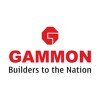
i
Patel Infrastructure
Filter interviews by
Patel Infrastructure Senior Safety Officer Interview Questions and Answers for Experienced
Patel Infrastructure Senior Safety Officer Interview Experiences for Experienced
1 interview found
I applied via Naukri.com and was interviewed in Dec 2020. There were 3 interview rounds.
Interview Questionnaire
1 Question
- Q1. What will you do at site
Interview Preparation Tips
Interview questions from similar companies

(6 Questions)
- Q1. What about yourJob ?
- Q2. My job is everything provide safety
- Q3. What's your self ?
- Q4. This is my all job relationship details
- Q5. Which hieght need work at height?
- Ans.
Work at height is typically considered to be any task performed above ground level, such as on ladders, scaffolding, or roofs.
Work at height typically refers to tasks performed above ground level
Common examples include working on ladders, scaffolding, or roofs
Height requirements may vary depending on the specific job or industry
- Q6. Ground level to 1.8 mtr
- Ans.
The question is likely referring to the height range for safety measures or regulations.
This height range is commonly used in safety regulations for fall protection.
Safety measures such as guardrails or safety harnesses may be required for working at this height.
Training on proper use of safety equipment is essential for workers at this height.
Interview Preparation Tips

I applied via Walk-in and was interviewed in Oct 2023. There were 2 interview rounds.

(4 Questions)
- Q1. Responsible of Safety Officer
- Q2. Ensuring compliance with occupational health and safety (OHS) guidelines in a workplace.
- Q3. Wath is Housekeeping.
- Q4. Workplace housekeeping may be defined as activities undertaken to create or maintain an orderly, clean, tidy and safe working environment. Effective housekeeping can eliminate many workplace hazards and he...
Interview Preparation Tips

I applied via Approached by Company and was interviewed in Dec 2023. There were 2 interview rounds.
(1 Question)
- Q1. Explain hydrojetting safety
- Ans.
Hydrojetting safety involves following proper procedures and using appropriate protective equipment to prevent accidents and injuries.
Ensure all personnel involved in hydrojetting are trained on safety protocols
Wear appropriate personal protective equipment (PPE) such as gloves, goggles, and protective clothing
Inspect and maintain hydrojetting equipment regularly to ensure safe operation
Follow proper lockout/tagout pro...
(1 Question)
- Q1. Explain about yourself
Interview Preparation Tips

Senior Safety Engineer Interview Questions & Answers
Onshore Constructionposted on 11 Feb 2024
I applied via Referral and was interviewed before Feb 2023. There was 1 interview round.
(4 Questions)
- Q1. What is LTI and its calculation formula
- Ans.
LTI stands for Lost Time Injury, a common safety metric in workplaces.
LTI is a safety metric used to track the number of work-related injuries that result in lost work days.
The formula to calculate LTI is (Number of Lost Time Injuries / Total Hours Worked) x 1,000,000.
For example, if a company had 5 lost time injuries in a year and the total hours worked by employees was 1,000,000, the LTI rate would be 5.
- Q2. What is safety consequences management policy?
- Ans.
Safety consequences management policy is a set of guidelines and procedures to address and mitigate potential safety risks and hazards in the workplace.
Establishing clear protocols for reporting and addressing safety incidents
Identifying potential safety hazards and implementing measures to prevent accidents
Training employees on safety procedures and protocols
Conducting regular safety audits and inspections
Developing e
- Q3. How have you approached workplace conflict?
- Q4. How do you work under pressure
Interview Preparation Tips
Legal requirements of Confined space activity.
Emergency rescue plan/systems

I applied via Naukri.com and was interviewed in Sep 2020. There was 1 interview round.
Interview Questionnaire
3 Questions
- Q1. Roles & Responsibility
- Q2. What is HIRA &heirachy of Control measure
- Ans.
HIRA stands for Hazard Identification and Risk Assessment. Hierarchy of Control Measures is a systematic approach to eliminate or minimize hazards.
HIRA is a process of identifying potential hazards and analyzing the associated risks.
Hierarchy of Control Measures is a step-by-step approach to eliminate or minimize hazards.
The hierarchy includes five levels: elimination, substitution, engineering controls, administrative...
- Q3. What precautions to be taken in lifting work
- Ans.
Precautions must be taken to ensure safe lifting work.
Assess the weight of the load and ensure it is within the safe lifting limit.
Use proper lifting techniques, such as bending at the knees and keeping the back straight.
Wear appropriate personal protective equipment, such as gloves and safety shoes.
Ensure the lifting area is clear of obstacles and hazards.
Use mechanical aids, such as cranes or forklifts, for heavy loa...
Interview Preparation Tips

Interview Questionnaire
1 Question
- Q1. How to provide fall arresting system in high rise storry
- Ans.
Fall arresting system in high rise story can be provided through various means.
Use of safety nets
Installation of guardrails
Use of personal fall arrest systems
Proper training and education of workers
Regular inspection and maintenance of equipment

Senior Electrical Engineer Interview Questions & Answers
Semac Consultantsposted on 23 Nov 2020
I applied via Referral and was interviewed before Nov 2019. There were 3 interview rounds.
Interview Questionnaire
1 Question
- Q1. They will ask About ur previous experience, Be strong & confident on what you know... Dont try to console...

I was interviewed before Jul 2016.
Interview Questionnaire
3 Questions
- Q1. What is excavation ?
- Ans.
Excavation is the process of removing earth or other materials from a site to create a hole or cavity.
Excavation is commonly done for construction purposes, such as building foundations or underground utilities.
It involves the use of heavy machinery, such as excavators or backhoes, to dig and remove the soil or rock.
Excavation may also be done for archaeological purposes to uncover artifacts or historical remains.
Safet...
- Q2. What is cretical lifting ?
- Ans.
Critical lifting refers to the process of lifting heavy objects or loads that require special attention and precautions to ensure safety.
Critical lifting involves assessing the weight and dimensions of the load to determine the appropriate lifting equipment and techniques.
It requires proper planning and coordination to minimize the risk of accidents and injuries.
Factors such as the stability of the load, the condition ...
- Q3. What is JHA
- Ans.
JHA stands for Job Hazard Analysis. It is a systematic process used to identify and evaluate potential hazards in the workplace.
JHA is used to assess the risks associated with specific job tasks or activities.
It involves breaking down the job into steps, identifying potential hazards, and determining control measures to mitigate those hazards.
JHA helps in preventing accidents, injuries, and illnesses by proactively add...
Interview Preparation Tips
Experience: Employer contact me on my mobile no. and called for face to face interview in Mumbai.
Tips: Be positive and give specific answers to questions. Don't get confuse to interviewer. Because he would be more intelligent then you.
Round: Technical Interview
Experience: I was done good
Tips: Read your notes and prepare yourself like a complete person for the above job.
Tell us how to improve this page.
Patel Infrastructure Interviews By Designations
- Patel Infrastructure IT Executive Interview Questions
- Patel Infrastructure Junior Executive Interview Questions
- Patel Infrastructure Admin Executive Interview Questions
- Patel Infrastructure Assistant Engineer - Civil Interview Questions
- Patel Infrastructure Assistant General Manager HR and Administration Interview Questions
- Patel Infrastructure Asst Store Interview Questions
- Patel Infrastructure Civil Engineer-Highway/Roadway Interview Questions
- Patel Infrastructure Civil Site Engineer Interview Questions
- Show more
Interview Questions for Popular Designations
- Safety Engineer Interview Questions
- Safety Manager Interview Questions
- Safety Officer Interview Questions
- Senior Safety Engineer Interview Questions
- Fire & Safety Officer Interview Questions
- Fire & Safety Supervisor Interview Questions
- Safety Supervisor Interview Questions
- Safety Incharge Interview Questions
- Show more
People are getting interviews through
Interview Questions from Similar Companies
|
Assistant Engineer
82
salaries
| ₹2 L/yr - ₹4.7 L/yr |
|
Store Executive
61
salaries
| ₹1.5 L/yr - ₹4.3 L/yr |
|
Structural Engineer
56
salaries
| ₹2.1 L/yr - ₹5.6 L/yr |
|
Highway Engineer
40
salaries
| ₹2.2 L/yr - ₹6 L/yr |
|
Lab Technician
39
salaries
| ₹1.3 L/yr - ₹3 L/yr |

Larsen & Toubro Limited

GMR Group

Reliance Infrastructure

IRB Infrastructure
Calculate your in-hand salary
- Home >
- Interviews >
- Patel Infrastructure Interview Questions >
- Patel Infrastructure Senior Safety Officer Interview Questions for Experienced














